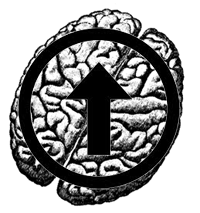 There’s a fundamental ontological difference between people and programs which means that uploading a mind into a machine is quite impossible.
There’s a fundamental ontological difference between people and programs which means that uploading a mind into a machine is quite impossible.
I thought I’d get my view in first (hey, it’s my blog), but I was inspired to do so by Beth Elderkin’s compilation of expert views in Gizmodo, inspired in turn by Netflix’s series Altered Carbon. The question of uploading is often discussed in terms of a hypothetical Star Trek style scanner and the puzzling thought experiments it enables. What if instead of producing a duplicate of me far away, the scanner produced two duplicates? What if my original body was not destroyed – which is me? But let’s cut to the chase; digital data and a real person belong to different ontological realms. Digital data is a set of numbers, and so has a kind of eternal Platonic essence. A person is a messy entity bound into time and space. The former subsist, the latter exist; you cannot turn one into the other, any more than an integer can become a biscuit and get eaten.
Or look at it this way; a digitisation is a description. Descriptions, however good, do not contain the thing described (which is why the science of colour vision does not contain the colour red, as Mary found in the famous thought experiment).
OK, well, that that, see you next time… Oh, sorry, yes, the experts…
Actually there are many good points in the expert views. Susan Schneider makes three main ones. First, we don’t know what features of a human brain are essential, so we cannot be sure we are reproducing them; quantum physics imposes some limits on how precisely we can copy th3 brain anyway. Second, the person left behind by a non-destructive scanner surely is still you, so a destructive scan amounts to death. Third, we don’t know whether AI consciousness is possible at all. So no dice.
Anders Sandberg makes the philosophical point that it’s debatable whether a scanner transfers identity. He tends to agree with Parfit that there is no truth of the matter about it. He also makes the technical point that scanning a brain in sufficient detail is an impossibly vast and challenging task, well beyond current technology at least. While a digital insert controlling a biological body seems feasible in theory, reshaping a biological brain is probably out of the question. He goes on to consider ethical objections to uploading, which don’t convince him.
Randal Koene thinks uploading probably is possible. Human consciousness, according to the evidence, arises from brain processes; if we reproduce the processes, we reproduce the mind. The way forward may be through brain prostheses that replace damaged sections of brain, which might lead ultimately to a full replacement. He thinks we must pursue the possibility of uploading in order to escape from the ecological niche in which we may otherwise be trapped (I think humans have other potential ways around that problem).
Miguel A. L. Nicolelis dismisses the idea. Our minds are not digital at all, he says, and depend on information embedded in the brain tissue that cannot be extracted by digital means.
I’m basically with Nicolelis, I fear.
